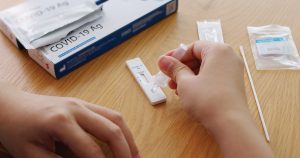
Oregon reports 278 new confirmed and presumptive COVID-19 cases, 2 new deaths
COVID-19 has claimed two more lives in Oregon, raising the state’s death toll to 182, the Oregon Health Authority reported at 12:01 a.m. today.
Oregon Health Authority reported 278 new confirmed and presumptive cases of COVID-19 as of 12:01 a.m. today, bringing the state total to 6,098.
The new cases reported today are in the following counties: Clackamas (21), Crook (1), Hood River (1), Jackson (1), Jefferson (1), Josephine (1), Klamath (8), Lane (1), Lincoln (17), Marion (22), Morrow (2), Multnomah (42), Umatilla (1), Union (119), Wasco (1), Washington (37), Yamhill (2).
Oregon’s 181st COVID-19 death is an 89-year-old man in Clackamas County, who tested positive on June 13 and died June 15, in his residence. He had underlying medical conditions.
Oregon’s 182nd COVID-19 death is an 85-year-old woman in Marion County, who tested positive on June 11 and died on June 13, at Salem Hospital. She had underlying medical conditions.
Increased cases show we still need to be cautious, follow health guidance
Today the Oregon Health Authority reported there were 278 new cases of COVID-19, another high number among several days of high case counts. We know the recent increase in cases has been concerning for many Oregonians. It’s concerning to us, too. It’s clear more testing and workplace outbreaks are contributing to the increase in cases, but we’re also seeing more cases of spread in the community.
Reopening Oregon still requires us to be cautious. We can slow the spread of COVID-19 and protect our loved ones, but we all need to do our part to make this happen. This means Oregonians will need to continue to consider the risks when they venture outside their homes or interact with people outside their close circles of contacts. Practicing physical distancing, wearing face coverings when physical distancing isn’t possible, staying home when sick, limiting unnecessary travel and practicing good hand hygiene remain critical strategies to slow the spread of COVID-19 and keep our communities safe.
Department of Justice issues scam alert related to contact tracing
The Oregon Department of Justice has issued a scam alert for people who are pretending to be contact tracers. These imposters send emails and text messages with links to fraudulent websites. Clicking on the link may download software onto a device, giving them access to an array of your personal and financial information.
If you receive an email or a text message you think might be from a scammer posing as a contact tracer, first, do not click on any links. Then, file a complaint online at www.oregonconsumer.gov or call 877-877-9392 and ask that a complaint form be mailed to you.
For more information on other COVID-19 scams, visit www.oregonconsumer.gov/COVID-19.
For more information on what you can expect from state, local, or tribal health department contact tracing efforts, visit www.healthoregon.org/contacttracing.
DHS, OHA introduce COVID-19 testing plan for long-term care facilities
On Monday the Oregon Department of Human Services (DHS) and Oregon Health Authority released a comprehensive statewide COVID-19 testing plan for long-term care facilities with more than five residents.
Implementation of the plan will occur in two phases. In the first phase, every facility will test all staff and offer testing to all residents. This phase begins June 24, and will conclude by Sept. 30. It will cover more than 680 large long-term care facilities statewide, which combined provide care for an estimated 31,000 residents and employ 29,000 staff. Residents and staff at nursing facilities in Multnomah, Washington, Clackamas, Yamhill, Marion and Polk counties will be prioritized, as these counties account for the majority of outbreaks in long-term care facilities to date. Testing will then commence at assisted living and residential care facilities with memory care units in those counties, followed by facilities without memory care. This same sequence will then roll out in other counties statewide.
In the second phase, facilities will develop and implement plans for ongoing monitoring. Plans will detail how they will monitor and test residents and staff, including testing all staff at least once per month.
Statewide testing in long-term care is an essential first step that will allow the state to examine how visitation policies can be safely and incrementally eased.
For more information on the long-term care facility testing plan, see the joint press release from DHS and OHA.




